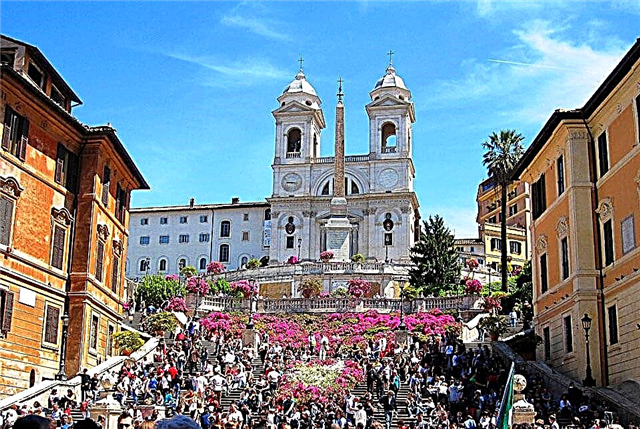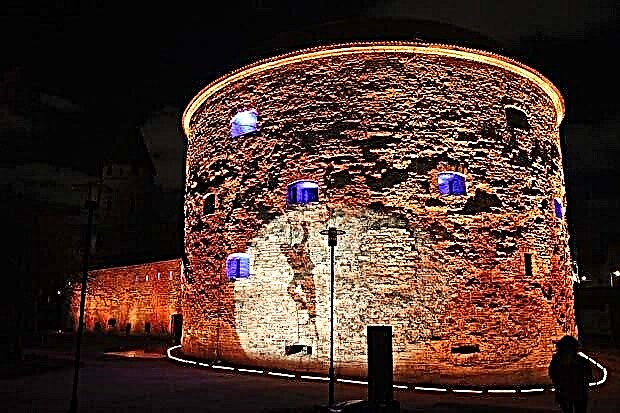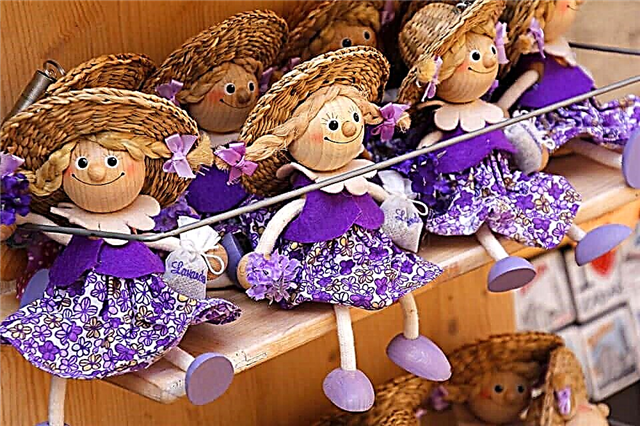In the center of the European part of Russia there is a region with great potential for tourism. The territory of the Republic of Tatarstan looks like a large colorful carpet woven from beautiful rivers, small lakes, fields and forest ridges. Travelers come here to get acquainted with ancient cities, see ancient temples, monasteries and unique natural monuments.
Cities of the Republic of Tatarstan

John the Baptist Monastery in Sviyazhsk
There are 24 cities in Tatarstan. Most people live in Kazan - 1.26 million people. Yelabuga attracts tourists with the mysterious Devil's settlement and the unique Ananievsky burial ground, Bugulma - with mansions of the 18th-19th centuries and the museum of Yaroslav Hasek.
Almetyevsk is loved for its interesting monuments, a well-groomed beach and a green city park, Bolgar - for the historical and archaeological complex of the former capital of the Golden Horde. Almost all the sights of Arsk, the rear outpost of the Kazan Khanate, are associated with the work of the Tatar poet Gabdulla Tukay. However, most of the travelers from different cities of Russia and from abroad come to Kazan.
Kazan
Article: Sights of Kazan - pages of the centuries-old history of the city

View of the ensemble of the Kazan Kremlin
The capital of the republic is rightfully called the tourist heart of Tatarstan. The ancient city harmoniously intertwines the history of the East and West, tradition and modernity. Kazan has preserved Tatar mosques, old Orthodox cathedrals, stone walls of the Kremlin, famous merchant estates and picturesque national quarters.
For 1000 years of history, the beautiful city has not lost its charm. In addition to buildings that were built many centuries ago, Kazan is decorated with modern architectural monuments - the Palace of Farmers, the center of the Kazan family and the Ekiyat puppet theater. Enjoy a walk along the picturesque Kremlin embankment and "Kazansky Arbat" - Bauman's pedestrian street.
Sviyazhsk island
Article: Island grad-Sviyazhsk - the living breath of antiquity

Island-city Sviyazhsk
Tourists willingly come to the island of Sviyazhsk to admire cathedrals and temples Theotokos-Uspensky Sviyazhsky Monastery... The revered men's monastery was founded in the middle of the 16th century, during the reign of Ivan IV the Terrible. On the territory of the monastery there have been preserved masterpieces of Russian temple architecture - the Assumption Cathedral and the refectory church of St. Nicholas the Wonderworker. Here you can also see rare 16th century fresco paintings.
There is another abode on an unusual island - John the Baptist Convent... It appeared in Sviyazhsk simultaneously with the construction of a wooden fortress - in the middle of the 16th century. The monastery ensemble includes a unique wooden church of the Life-Giving Trinity, the Church of St. Sergius of Radonezh and a cathedral built in honor of the icon of the Mother of God "Joy of All Who Sorrow".
Monasteries

On the territory of the Zilansky Assumption Monastery in Kazan
There are two main religions in the republic - Orthodoxy and Islam. In addition, local residents practice Judaism, Catholicism and Lutheranism. There are 14 male and female Orthodox monasteries in Tatarstan.
In Kazan, you can visit four Orthodox monasteries at once. There are two women's monasteries in the capital of the republic - the Kazan Monastery of the Mother of God and the Zilan Dormition Monastery, and two monasteries - the Kizichesky Vvedensky and John the Baptist.

Holy Ascension Makaryevsky Monastery
The Ascension Makaryevskaya monastery is very beautiful, which is located near the village of Petropavlovskaya Sloboda. The monastery was created on the spot where Makarii Unzhensky made a stop in 1439. The venerable elder visited these places when he returned to Russia from the Horde captivity. The most picturesque view of the snow-white temples and the bell tower opens from the Sviyaga River.
Many tourists come to Zelenodolsk district, where the Raifsky Bogoroditsky monastery is located - the largest of the monastic ensembles in Tatarstan. The history of the monastery began in the first half of the 17th century. Tourists are attracted by the temple architecture, and pilgrims come here to pray to the miraculous icon of the Mother of God "Georgian".

Raifsky Bogoroditsky monastery in winter
Merchant estates
In different parts of Russia, the former master's estates have long sunk into oblivion, but in Tatarstan several remarkable manor buildings have survived. "Dolgaya Polyana" is located near the town of Bolgar, in the Tetyushsky mountains. The natural monument was created on the site of the estate of the noble landowners Molostvovs. Among the birch and linden alleys there is an old manor house, and exotic trees and shrubs grow.
In Chistopol, tourists like the two-storey stone building that remains from the estate of Peter Shashin. A well-known trader owned trading posts, windmills and oil mills. Shashin was an Old Believer and created a prayer house in his estate, and an Old Believer school in the city. Today, an intricate building in Chistopol has the status of a monument of urban planning and architecture of the 19th century.

The Molostovs' estate in Dolgaya Polyana
The stone estate of the merchant Stakheev in the village of Krasny Klyuch, near Nizhnekamsk, was originally designed. Looking at the columns of the Corinthian order and stucco medallions on the facades, it is easy to imagine that you are in St. Petersburg. Inside the mansion there is a stove with beautiful tiles, and next to the building there is an elegant fountain with a sculpture of a boy.
Several wooden manor houses built in the 19th and early 20th centuries have survived in the republic. These are the estate of the merchant Valiulla Bakirov in Bolshoy Menger, the house of the merchant Gataulla Dautov in the village of Bolshaya Atnya and the estate of the Kazan merchant Pavel Shchetkin in the village of Srednee Devyatovo.

The estate of the merchant Dautov in Bolshaya Atna
Natural attractions
Tourists go to Tatarstan not only for the sake of beautiful architecture and historical monuments. The Tatar lands lie in the forest and forest-steppe zone and are famous for powerful rivers, karst lakes and green hills.
The largest protected area of the republic - the Volzhsko-Kamsky reserve was created to protect the nature of the middle Volga region. One of the oldest forests in Eastern Europe grows on the left bank terraces of the Volga. Some trees are over 300 years old. The nature reserve and arboretum await visitors in the reserve.

Chatyr-Tau or Tent-Gora
The Nizhnyaya Kama National Park is located in the north-east of Tatarstan. Since 1991, forests and meadows, picturesque landscapes, rare plants and animals have been protected in the Kama valley and on the tributaries of this river.
The relief of the republic is not only flat. The highest point of Tatarstan - Chatyr-Tau or in Tatar “tent-mountain” rises to a height of 321 m. The summit looks like a green tent, and it offers an excellent view of the surrounding villages and the territory of neighboring Bashkortostan. The giant outlier Chatyr-Tau is a real Mecca for fans of hang gliding and paragliding.

Yurievskaya cave
Near Zelenodolsk, on the border with Chuvashia and Republic of Mari El the Vyazovskie Mountains stretch. Forested ridges are famous for birch groves, Red Book plants and small karst lakes.
Tatarstan is also interesting for speleological sights. In the Bogorodskiy mountains there is the largest in the Volga region Yurievskaya cave, the length of which is more than 1 km. Scientists have been studying the underground cavity since the middle of the last century. For tourists, there is a rockfall grotto at the entrance, two large halls and three manholes. To get into the cave, you need to take part in the caving tour.

Bird's eye view of Kara-Kul lake
Travelers are delighted with the oxbows of the Kazanka River - the Blue Lakes, which are located 20 km from the center of Kazan.Three crystal clear turquoise water bodies are of karst origin. They feed on cold springs, therefore, even in the summer months, the lake water is warmed up to only + 4 ... + 6 ° С.
Another unusual lake - Kara-Kul is called Tatar Loch Ness... The karst reservoir is 200 m long and 130 m wide. Because of the reflected tree crowns, the water in it looks green-blue. According to the Tatar legend, a big snake "su ugeze" lives in Kara-Kul. In fact, the legendary lake is home to a lot of large fish - perch, chub, carp, tench and silver carp.

Bread Museum in Bolgar
Active tourism
According to statistics, most tourists come to Tatarstan for May holidays... During the warmer months, horseback riding and horseback riding, forest trekking, cycling, water trips and fishing on large rivers and reservoirs are popular. Fans of folk crafts and traditions visit ethnic villages, the open-air museum "Tatar avyly" and the Sabantuy folk festival.
In winter, you can go downhill skiing in Tatarstan. There are several ski resorts in the republic. The mountains here are not high, and the trails cannot be compared with winter recreation centers in Europe. However, beginners and intermediate athletes like to come to Tatarstan. There are so many people who want to go skiing and snowboarding that there are no vacant places in the hotels.

Nizhnekamsk Cathedral Mosque
What to see with children
If you are going to Tatarstan with a child, include Kazan in the travel program. The whole family is interested in walking around the Kazan Kremlin and the Old Tatar Sloboda. The city has water parks, a puppet theater "Ekiyat", entertainment centers, an amusement park "Kyrlay" and zoos.
Older children love the Natural History Museum. In the interactive exhibition you can see the bottom of the Kazan Sea and a saber-toothed tiger, take part in the excavation of a dinosaur and measure your weight on the "space" scales.
Kids are delighted with the Kazan Chak-Chak Museum. Young tourists are especially impressed by the final part of the excursion, when everyone is drinking tea and tasting a sweet Tatar delicacy.

Memorial complex of Gabdulla Tukai in the village of New Kyrlay
An excellent place for a family trip in winter is the residence of the Tatar Father Frost, which is located an hour and a half from Kazan. Kysh Babai and his assistant Kar Kazy live in a beautiful spruce forest near the village of New Kyrlay and receive guests from December 1 to January 27.











